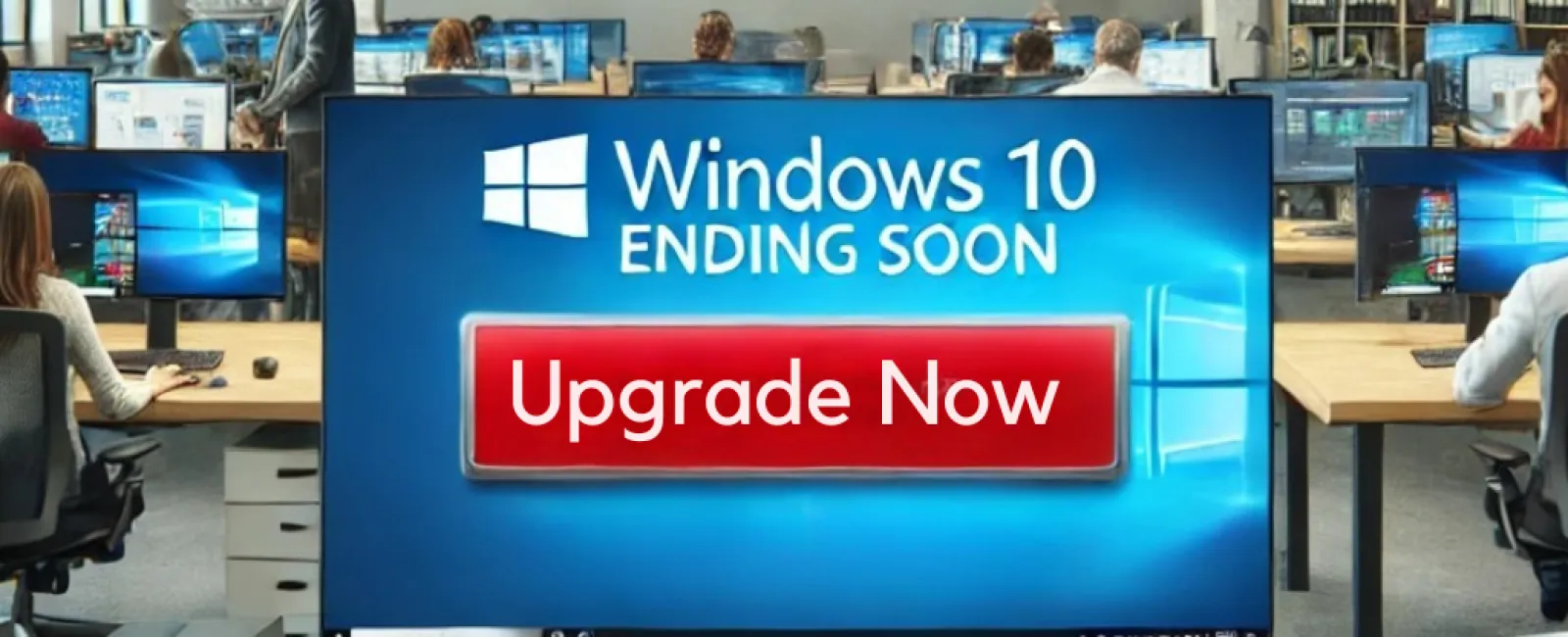April 14, 2025
Mark Your Calendar: Windows 10 End of Life - October 14, 2025 October 14, 2025 marks a major milestone in tech: the official end of support for Windows 10. After this date, Microsoft will no longer issue security updates, bug fixes, or technical assistance for the operating system. But what does this mean for your business—especially your critical applications and day-to-day productivity? If your organization is still relying on Windows 10 beyond the cutoff, it's not just your operating system that's at risk—your entire tech stack could be compromised. Here's what you need to know. Without ongoing security patches from Microsoft, any newly discovered threats will go unaddressed, creating significant exposure for your systems and applications. What This Means for Your Business Applications: Increased Risk of Data Breaches Compliance Risks Operational Disruptions As vendors release new versions of their software, support for Windows 10 will decline. This creates a ticking time bomb of compatibility problems. Potential Consequences: Frequent Crashes and Glitches Missing Features Security Gaps It's not just Microsoft ending support—third-party vendors are following suit. As time goes on, using Windows 10 will feel increasingly like running outdated software in a modern world. Expect the Following: End of Customer Support Limited Integration with Modern Tools Hardware Limitations Outdated operating systems can't keep up with the demands of modern applications—period. The Business Impact: Slower System Performance More Downtime Higher Maintenance Costs Avoid unnecessary disruption and risk by planning your next steps today: Make sure your important files and systems are securely backed up before making any changes. Check Compatibility: Use Microsoft's PC Health Check Tool to see if your current hardware supports Windows 11. Plan Ahead: If upgrades aren't feasible, start budgeting for new devices now. Get expert advice tailored to your business. Ensure a seamless upgrade process with minimal downtime. Implement proper cybersecurity protections throughout the transition. The end of Windows 10 support is approaching fast. Procrastinating could leave your business vulnerable to cyberattacks, system failures, and compliance penalties. Start with a FREE Network Assessment. Our team will evaluate your current infrastructure, assess application dependencies, and help you plan a smooth, secure transition. 👉 Click here to schedule your FREE Network Assessment today! Don't leave your business applications exposed. Take proactive steps now to ensure security, stability, and success beyond Windows 10
No More Security Updates = Major Vulnerabilities
Unpatched vulnerabilities are prime targets for cybercriminals. Your apps could be more susceptible to ransomware, malware, and hacking attempts.
If you're in a regulated industry like healthcare or finance, running applications on an unsupported OS could lead to compliance violations—and steep penalties.
A single cyberattack can bring operations to a halt, costing your business valuable time and resources.
No More Feature Updates = Growing Compatibility Issues
Applications may become unstable, experience errors, or stop launching altogether.
You'll miss out on performance improvements, new capabilities, and innovations built for newer operating systems like Windows 11.
Without compatibility for updated features, you may lose access to crucial security enhancements in your business applications.
No More Technical Support from Vendors
Vendors may stop troubleshooting or providing updates for their software running on Windows 10.
Newer applications will be optimized for current systems, reducing compatibility and productivity on older setups.
New devices may not have drivers for Windows 10, making future upgrades more complicated and costly.
Productivity and Performance Will Decline
Older systems may struggle to run updated software efficiently, dragging down productivity.
Frequent crashes and errors can interrupt work and lead to costly outages.
Maintaining legacy systems requires more time and resources—eating into your IT budget.
What You Should Do Now
✅ Back Up Your Data
✅ Upgrade to Windows 11—or Replace Outdated Devices
✅ Work with a Trusted IT Partner - Highly Recommended
Don't Wait Until It's Too Late

